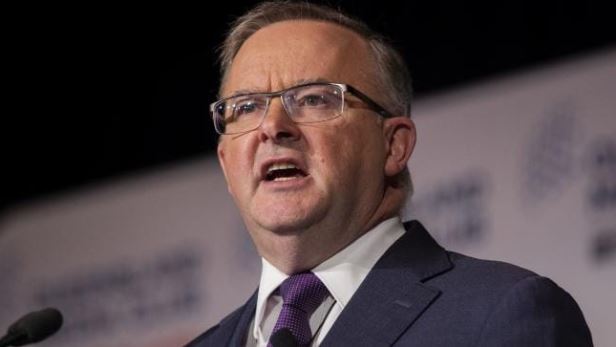The Labor leader made headlines this week after making a speech to the Queensland Media Club on Wednesday outlining his vision for older Australians – including the idea of co-locating aged care facilities with kindergartens and preschools.
“Like many of you, the ABC program ‘Old People’s Home For 4 Year Olds’ made me laugh and made me cry – but it also made me imagine a future of intergenerational care,” he said.
“Day respite for our elderly is a missing piece of the puzzle. For many families, they want mum or dad to stay at home or live with them, but they worry about the long days when they are at work.”
“Imagine being able to drop your child and grandmother off at the same location.”
Mr Albanese drew the idea from the TV show, which brought together a group of aged care residents and kindergarten students for a social experiment and was a huge hit for the national broadcaster.
The idea of intergenerational care is not new. In South Australia, aged care provider James Brown is building the first school campus next to its 88-bed Kalyra Woodcroft facility in Morphett Vale, south of Adelaide.
But while research has shown intergenerational relationships have health and social benefits for both older people and children, the reality could be quite different.
Most older people enter residential care at the end of their lives. They can be frail and are usually living with a range of chronic health conditions and cognitive impairments such as dementia.
This requires specialised care – and supporting older people is not the same as looking after young children.
There’s also the fact not all older Australians want to spend time with young children – though some certainly enjoy the interaction.
Many aged care providers already successfully run intergenerational playgroups and choirs with children and outreach programs with schools.
Perhaps the answer would be to provide more funding to establish these kinds of groups.
Our loved ones will be able to reap the benefits of engaging with children if they choose to – while ensuring they still receive the support they need in a caring environment.




Discussion1 Comment
“It takes a village to bring up a child.”… and care for our older folks. Segregation does little good and denies the natural cycles of life.
More so, the privatisation of services for young and old has corroded the mode of delivery and accessibility of these services. Excessive costs, large sums retained by such enterprises after the passing or moving out and
control virtually removed from residents and their families.
Suspect thi situation is what our P.M. suscribes to when saying that he will “give a go to those who have a go”.
Others in current/past front bench have much to profit from child care enjoying sizeable public funds subsidies despite which periodically going under with losses we have to bare.
“Gains are private, losses public”
Privatising such essential services has not improved their accessibility, simply moved wealth from 80% of the general population to the remaining top.
Questionable social engineering ?